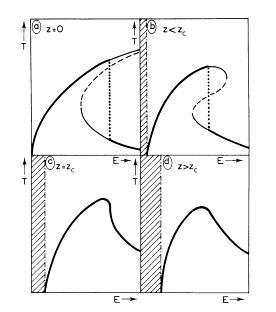Physics
Subtopics: Black Holes Big Bang Neutrinos Vacuum G Self-Gravity Grav. Thermodynamics
My interest in fundamental aspects of gravitation has ranged from a study of black holes and of the big bang to possible variability in Newton's gravitational constant and changes in the structure of the vacuum. Gravitational phenomena, while measurable to some extent in the laboratory, can be studied under much more interesting conditions in the universe. For example, even if we could somehow fabricate a black hole in a laboratory, it would immediately explode into a cloud of energetic radiation via the Hawking process, in much less than a picosecond. And neither is it likely that we would want to start a new big bang in a lab, even if we knew how. Therefore, gravitational physics necessarily overlaps with astrophysics for tests and applications.
My fascination with gravitation is largely connected with thermodynamics, especially the study of phase transitions. Since gravity is a long range force, there is no thermodynamic limit: if you scale up a laboratory experiment in a thought experiment, sooner or later gravitation will dominate, and things will fall apart (in astrophysics this upper limit is called the Jeans length). For a fixed finite size, though, thought experiments are possible. I have written several papers about such experiments: you can put a charged black hole in a box, and let it equilibrate with its own Hawking radiation; or on a purely classical level, you can study how a system of point masses enclosed in a box can undergo gravothermal run-away in central density. A most dramatic application would be a possible phase transition in the vacuum state of our universe as a whole. While such transitions would be catastrophic were they to occur now, they may have been beneficial very early on, deep in the first second of the history of universe, where they may have produced the baryons that make up most of the mass of our own bodies.
Because gravitation is such a weak force, in comparison to all other known forces in nature, it is difficult to measure its strength accurately. The quoted accuracy of the best measurements of the gravitational constant G is on the level of 0.01%, far lower than the precision with which we have measured the strength of many other fundamental constants of nature (and systematic effects may still be significantly larger than the quoted error levels). With these uncertainties, it is hard to exclude possible variations in the magnitude of G. A part of my research has addressed the questions of spatial variations as well as temporal variations in G.
Another area of overlap between physics and astrophysics is the field of astroparticle physics. We do not know the constitution of most of the matter in the universe, the so-called dark matter which we can feel gravitationally but have not yet detected otherwise. It is quite likely that this matter is made up of elementary particles that were created very early in the big bang. Some components may be formed by known particles, such as neutrinos; other components may be made out of particles that have not yet been discovered in the laboratory (supersymmetric particles form one of the leading candidates). In this context, I have written a few papers on limits on neutrino properties posed by big bang physics.
